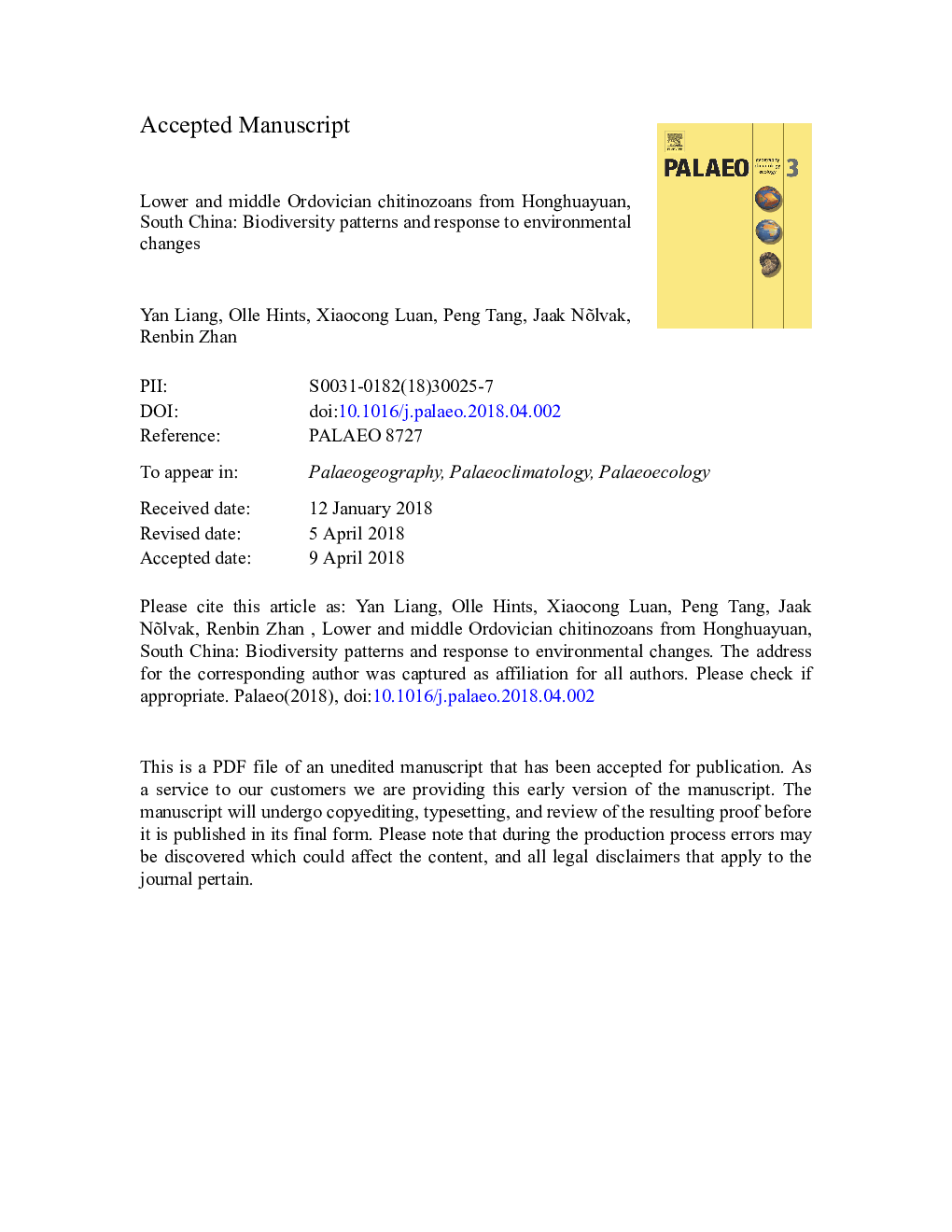| Article ID | Journal | Published Year | Pages | File Type |
|---|---|---|---|---|
| 8868218 | Palaeogeography, Palaeoclimatology, Palaeoecology | 2018 | 41 Pages |
Abstract
A complete chitinozoan succession through the uppermost Tremadocian to lower Darriwilian (Lower and Middle Ordovician) at Honghuayuan, northern Guizhou Province in South China, was systematically studied and 47 species of 14 genera were identified. Two chitinozoan biodiversity acmes were recognized, which occur in the lower part of the Acrograptus filiformis (uppermost Hunghuayuan Formation) and middle part of the Azygograptus suecicus (middle member of the Meitan Formation) graptolite biozones. In the upper Dapingian and lower Darriwilian (uppermost part of the Meitan Formation), chitinozoan diversity was relatively high after a less conspicuous peak in the upper Dapingian. Comparisons between diversity trends of chitinozoans, acritarchs and brachiopods, and the environmental changes revealed both similarities and differences. In the Floian, the chitinozoan biodiversity curve at Honghuayuan shows good correlation with sea-level changes. The group temporarily disappeared when the sea level was at the highest, then reappeared and reached a biodiversity acme when sea level was low. Furthermore, a large organic carbon isotope excursion is coincident with the absence of chitinozoans and a highstand period after the sea-level rise in the lower and middle Floian. Diversity curves show fewer connections with the sea-level and organic C-isotope undulations during the Dapingian and early Darriwilian. New data suggest that the environmental changes played a significant role in the early stage of Ordovician chitinozoan radiation, roughly corresponding to the Floian at the Honghuayuan section. In the Dapingian and early Darriwilian, the intrinsic factors seem to have played a more important role in shaping biodiversity patterns of chitinozoans in South China.
Keywords
Related Topics
Physical Sciences and Engineering
Earth and Planetary Sciences
Earth-Surface Processes
Authors
Yan Liang, Olle Hints, Xiaocong Luan, Peng Tang, Jaak Nõlvak, Renbin Zhan,
